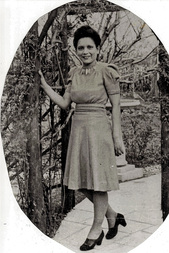~ Chapter Twenty-Seven ~
Protecting the British Raj
In or around 1927, Sydney joined the Army, enlisting in The Buffs with the first names of Stanley Edward and the surname of Quelch, his mother’s maiden name. No-one knows for sure why he didn’t use his real name. One story to emerge, probably originating from Sydney himself, is that he had “killed a man”. If the rest of his life is anything to go by, however, it is far more likely that he wanted to run away from woman trouble.
Whatever the reason for changing his name, Private Quelch was sent with the 1st Battalion of The Buffs to serve in India, which was then under British rule, more commonly known as the British Raj. In 1930, the 1st Battalion was transferred to Burma to help suppress the Saya San Rebellion. This summary of the rebellion was written by A. T. Gorton, Professor of History and Humanities at Pepperdine University in Lausanne, Switzerland:
Whatever the reason for changing his name, Private Quelch was sent with the 1st Battalion of The Buffs to serve in India, which was then under British rule, more commonly known as the British Raj. In 1930, the 1st Battalion was transferred to Burma to help suppress the Saya San Rebellion. This summary of the rebellion was written by A. T. Gorton, Professor of History and Humanities at Pepperdine University in Lausanne, Switzerland:
|
|
While we have no information about the part, if any, that Sydney played in quelling the uprising, we do know that by 1933 he was still based at Maymyo, the capital of the British Raj in Burma. We also know that in early August of that year, twenty-four year-old Sydney travelled to Lucknow in India, where he married a local girl called Sybille Iris Chloe Browne. Sybille, who is pictured here, was an Anglo-Indian, born in Poona in 1910, a year after Sydney.
Not long after the marriage, The Buffs ended their tour of duty in India. Sydney’s nephew, Ken Holmes, takes up the story from there: |
|
Once reunited, Sydney and Sybille settled down in Margate, where their daughter, Inez Patricia Anne Quelch, was born in July 1935. Again, Ken shares his memories of the family at that time:
|
Happy together or not, the family would be plunged into turmoil within a very short space of time.
